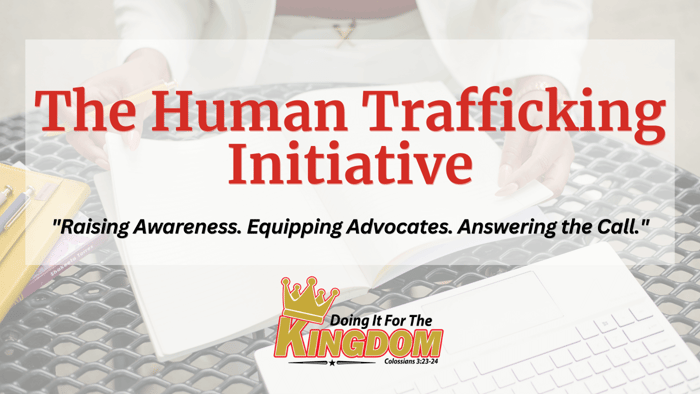Table of Contents
- Social Media Sex Trafficking Ring: Five Thai Teen Girls Rescued
- 📍 Case Summary: What Happened in Thailand (Social Media Sex Trafficking)
- 🔍 The Operation: Digital Surveillance and Field Response
- 🚑 The Victims: Exploited Through Screens (Social Media Sex Trafficking)
- 🧠 Understanding Online Grooming and Exploitation (Social Media Sex Trafficking)
- 🔐 How Social Media Enables Trafficking
- ⚡ Lessons from the Rescue: Multi-Sector Collaboration
- 🛡️ Post-Rescue Support and Survivor Care
- 📊 The Bigger Picture: A Global Problem
- 🌐 Tech Companies Must Do More
- 🚨 How You Can Help Fight Social Media Sex Trafficking Ring Online Trafficking
- ✉️ Final Word: When Technology Becomes a Weapon
- FAQs
Social Media Sex Trafficking Ring: Five Thai Teen Girls Rescued
Social Media Sex Trafficking Ring: Five Thai Teen Girls Rescued
In a decisive victory against cyber-enabled trafficking, five teenage girls in Thailand have been rescued from a social media-driven sex trafficking network. The girls, some as young as 13, were recruited and sold through posts online that masked predation as opportunity. This case highlights the dangers of digital exploitation and the growing importance of cyber investigations and survivor-informed rescues.
📍 Case Summary: What Happened in Thailand (Social Media Sex Trafficking)
Location: Thailand (specific province undisclosed for victim safety)
Victims: Five teenage girls, ages 13 to 17
Trafficking Method: Social media grooming and online advertising
Rescue Operation: Partnership between The Exodus Road and Thai police
Date of Operation: June 2025
According to The Exodus Road, traffickers were using social media platforms to post photos and coded advertisements of teenage girls, allowing potential buyers to message and coordinate sex purchases directly through messaging apps. The girls were under the control of adult traffickers who coordinated their movements and arranged meetings with buyers.
🔍 The Operation: Digital Surveillance and Field Response
The nonprofit’s cyber team, trained in digital forensics and online tracking, monitored and documented activity from multiple accounts suspected of trafficking minors. Once the digital evidence was verified, it was handed to Thai law enforcement. A carefully planned field operation followed.
Officers rescued the five girls and arrested four adults responsible for their trafficking. The girls were removed from harm and immediately connected with trained social workers who ensured they understood they were not in trouble and were now safe.
🚑 The Victims: Exploited Through Screens (Social Media Sex Trafficking)
The rescued teenagers were lured into the trade under false pretenses, including promises of income, gifts, or status. Like many trafficking victims, they came from vulnerable backgrounds—some with histories of abuse, poverty, or broken family systems.
Social media allowed traffickers to normalize their manipulation. The girls were often contacted through friendly messages or flattering comments. Slowly, what began as a conversation escalated into exploitation, all while hiding in plain sight.
Their exploitation was perpetuated not just by traffickers but by the normalization of sexualized online content and lack of regulation. They were commodified in plain sight, often through platforms commonly used by teens worldwide. Apps with disappearing messages, encrypted chats, and anonymous user profiles gave predators cover while leaving teens exposed.
🧠 Understanding Online Grooming and Exploitation (Social Media Sex Trafficking)
Online grooming is often a slow, psychological manipulation process that builds trust with the victim. Traffickers often:
Pose as friends, romantic partners, or talent scouts
Offer praise, money, or promises of fame
Slowly desensitize the victim to sexualized content or conversation
Use threats, shame, or blackmail to escalate control
This tactic is especially effective with teens who are seeking affirmation, independence, or escape from their real-life struggles.
🔐 How Social Media Enables Trafficking
This case is part of a broader global trend:
Traffickers use Facebook, TikTok, and Instagram to recruit, advertise, and groom victims.
Coded hashtags, emojis, and innocuous-looking content conceal illicit exchanges.
Messaging apps enable direct buyer communication without accountability.
Many platforms lack age verification or human oversight, making it easy for predators to create fake profiles or target underage users.
The ISEAS-Yusof Ishak Institute emphasizes that digital inequality and poverty drive online vulnerability, with traffickers exploiting youth who lack awareness, supervision, or safe alternatives (ISEAS Perspective).
⚡ Lessons from the Rescue: Multi-Sector Collaboration
The rescue operation’s success shows what can happen when:
NGOs and police share intelligence and plan strategically
Cyber teams work proactively to monitor digital marketplaces
Social workers are embedded in rescue teams to ensure emotional care
Law enforcement trusts digital evidence and acts with urgency
This level of coordination offers a powerful example for other nations facing similar trafficking challenges.
🛡️ Post-Rescue Support and Survivor Care
Once rescued, the girls began receiving trauma-informed support. This includes:
Emergency shelter and clothing
Medical and psychological assessments
Counseling and crisis stabilization
Legal representation and case management
Education reintegration or vocational training
Ongoing mentorship from trusted women in the community
The Exodus Road and its partners focus on healing the whole person, not just removing them from danger. Restoration is a long journey, and it requires safety, time, dignity, and patience.
📊 The Bigger Picture: A Global Problem
While this case took place in Thailand, social media-enabled trafficking is a global crisis. In the U.S., similar grooming tactics are used by traffickers on gaming apps, chat rooms, and encrypted platforms. Victims often don’t realize they are being trafficked because manipulation begins with friendship, flirtation, or emotional dependence.
According to the National Center for Missing and Exploited Children, reports of online enticement rose 82% between 2019 and 2021, with social media being the most common medium. Children are being targeted worldwide in increasing numbers.
🌐 Tech Companies Must Do More
Social media companies have a moral responsibility to:
Improve content moderation and AI detection tools
Require stronger age verification processes
Respond faster to flagged content
Provide transparency in reporting data related to trafficking-related accounts
Without accountability at the platform level, predators will continue to operate with little resistance.
🚨 How You Can Help Fight Social Media Sex Trafficking Ring Online Trafficking
Report suspicious content on social media platforms immediately
Educate teens about grooming, manipulation, and online red flags
Support organizations like The Exodus Road and Doing It for the Kingdom
Encourage schools and churches to host trafficking prevention seminars
Advocate for tech accountability and platform-level regulation
Volunteer or donate to programs that provide survivor aftercare and digital education
✉️ Final Word: When Technology Becomes a Weapon
This rescue reminds us that the internet is not neutral. It can be a tool for freedom or a trap for exploitation. As traffickers evolve their methods, so must our efforts to expose them.
Five teenage girls in Thailand are now free thanks to vigilance, strategy, and compassion. But the work is far from over. Digital exploitation continues to evolve, and it will take coordinated, global, faith-rooted action to stand in the gap.
🔗 Visit https://www.doingitforthekingdom.org to support trafficking prevention, education, and survivor care.
Because freedom should never be optional. Especially not for a child.
FAQs
1. How were the five teenage girls trafficked through social media?
Traffickers used social media to post coded ads and images of the girls. Buyers contacted them via direct messaging apps to arrange meetings. This method allowed exploitation to occur while hiding in plain sight online.
2. What role did The Exodus Road play in the Thailand trafficking case?
The Exodus Road’s cyber team investigated digital activity linked to child trafficking, collected online evidence, and collaborated with Thai law enforcement to plan and execute the rescue operation that freed the five girls.
3. Why is online grooming so effective in human trafficking cases?
Online grooming preys on emotional needs. Traffickers offer attention, gifts, or false promises to gain trust. Over time, this can lead to manipulation, isolation, and eventual exploitation, especially for vulnerable teens.
4. What happens after victims are rescued from human trafficking?
Survivors receive trauma-informed care, including medical treatment, therapy, shelter, education, and legal support. Recovery is a long-term process focusing on restoring safety, dignity, and purpose.
5. How can parents and communities prevent trafficking via social media?
Prevention starts with education. Teach teens about online safety, monitor internet activity, report suspicious content, and support organizations that raise awareness and advocate for safer tech environments.


